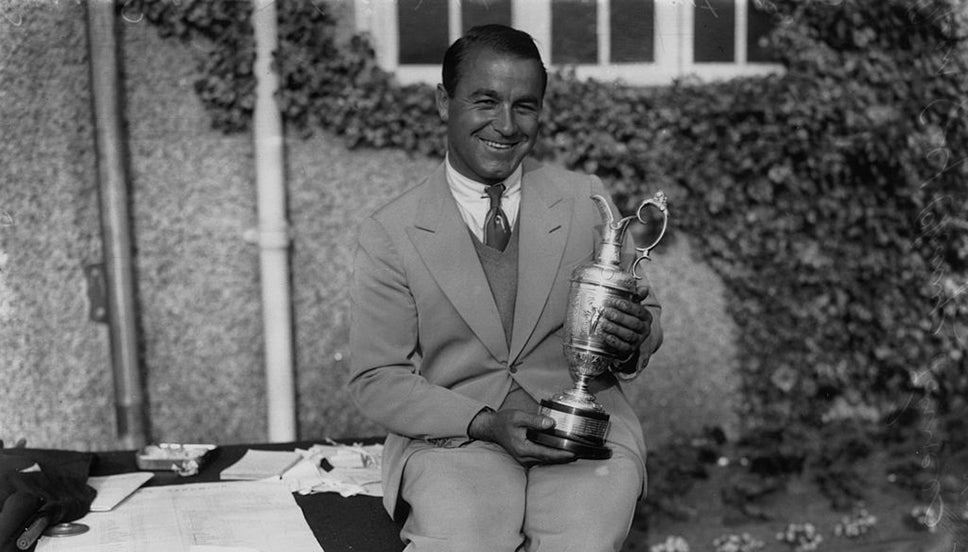The American, who was crowned the Champion Golfer of the Year in the only Open to be held at Prince's, was the first player to complete the career Grand Slam by winning the four modern-day Majors.
Ben Hogan, Gary Player, Jack Nicklaus and Tiger Woods all went on to follow in his footsteps but Sarazen first trod the path to golfing immortality.
Humble beginnings
Born Eugenio Saraceni to Italian parents in New York in 1902, Sarazen knew what it meant to work hard early on in life.
His father, a carpenter, had a low income so from a young age Sarazen was picking fruit, selling newspapers and doing whatever labour that paid.
That had an early impact. Aged 15, he became ill while working as an apprentice for his father and was advised by doctors that the dusty environment was a long-term health risk.
Instead, the young Eugene went to work for a golf club and he soon changed his name to Gene Sarazen - insisting it "sounded like a golfer". The gamble worked. Quickly, that name would be known all round the world.
American trio make their mark
Sarazen quickly became a household name after turning professional, winning the U.S. Open and PGA Championship - which was then a match-play tournament - in 1922 before successfully defending the latter event the following year.
Along with Walter Hagen and Bobby Jones, Sarazen was one of three Americans at the forefront of world golf and the talented trio played in exhibitions all over the globe.
Yet while Hagen and Jones enjoyed plentiful success at The Open through the 1920s, Sarazen was unable to initially conquer golf's original Championship. He was second in 1928 - after making a costly decision to ignore his caddie's advice - and third in 1931, but the Claret Jug remained elusive, at least until 1932.
Innovation pays off
When Sarazen arrived at Prince's for The 67th Open, he had a new weapon in his arsenal.
His creation of a new 'sand wedge', which he used competitively for the first time at Prince's, was certainly helpful on links land.
Aided by his innovative new club, Sarazen duly dominated the Championship, becoming only the third player - after Ted Ray and Jones - to lead outright after every round of a 72-hole Open.
Sarazen led by just one after an opening 70, but a 69 in round two stretched his advantage to three at the halfway stage.
Although Arthur Havers shot a course-record 68 in the third round to climb up to second, Sarazen moved four clear thanks to another 70, as he moved ever closer to glory.
When Sarazen closed the Championship with a 74, Havers - who teed off some two hours later - was left needing a 69 to deny the American. However, he could only manage a 76 and Macdonald Smith ultimately finished as the runner-up, a distant five strokes behind Sarazen.
Four years on from his painful near-miss at Royal St George's, Sarazen had claimed the Claret Jug at the course's neighbouring venue.
Grand Slam glory
Having ended a lengthy wait for his fourth Major title and maiden Open triumph, Sarazen won the U.S. Open just two weeks later, before adding a third PGA Championship crown in 1933.
His Grand Slam of Major victories was completed in 1935, when he won only the second edition of the Masters.
